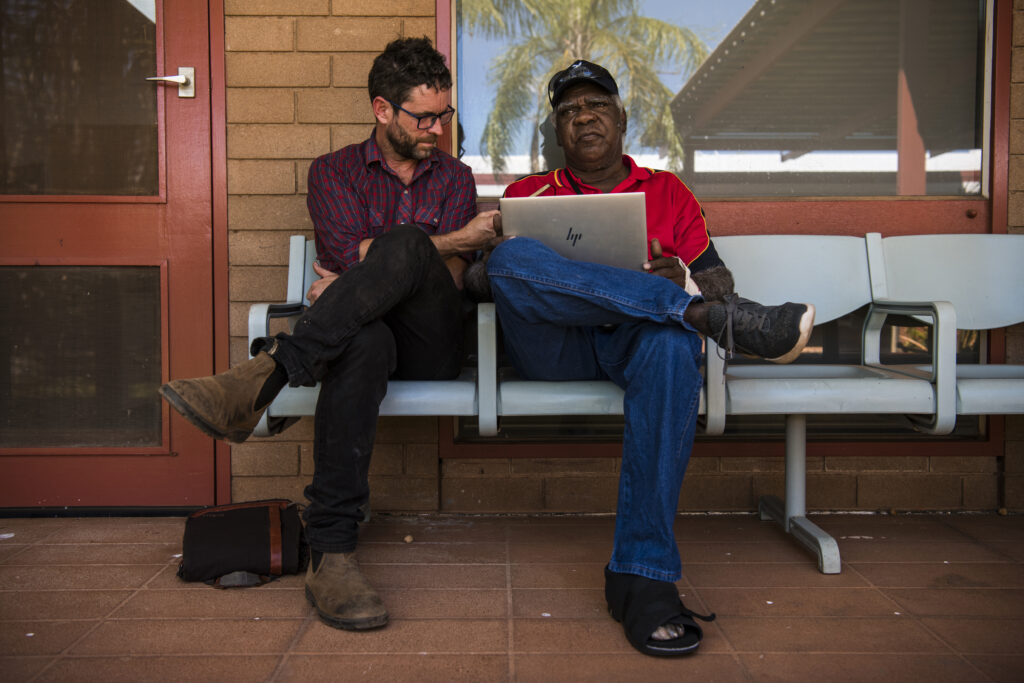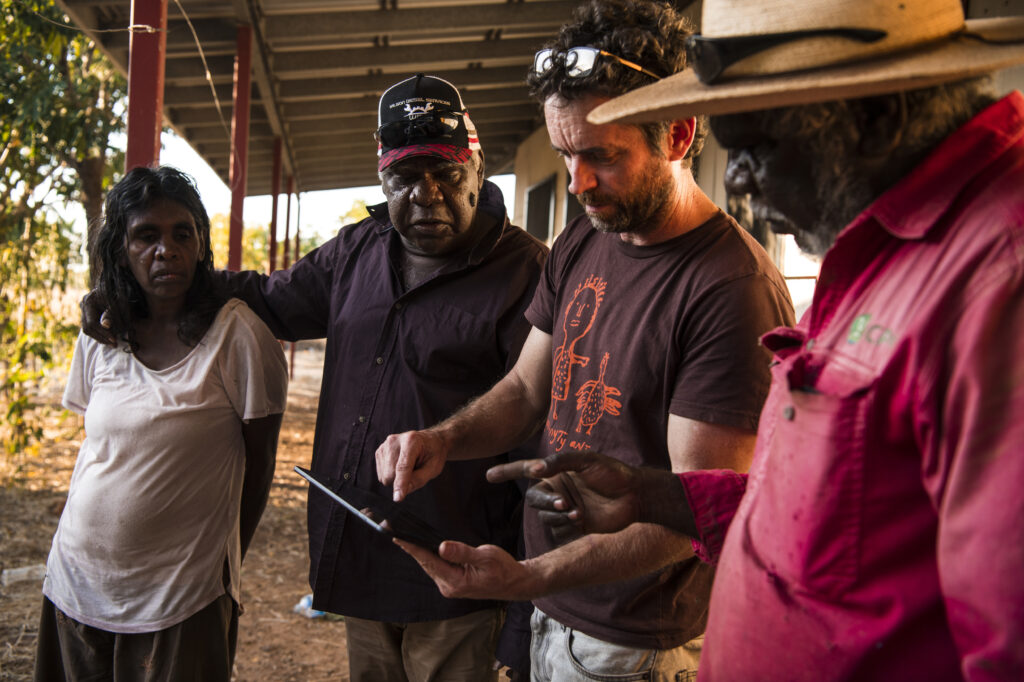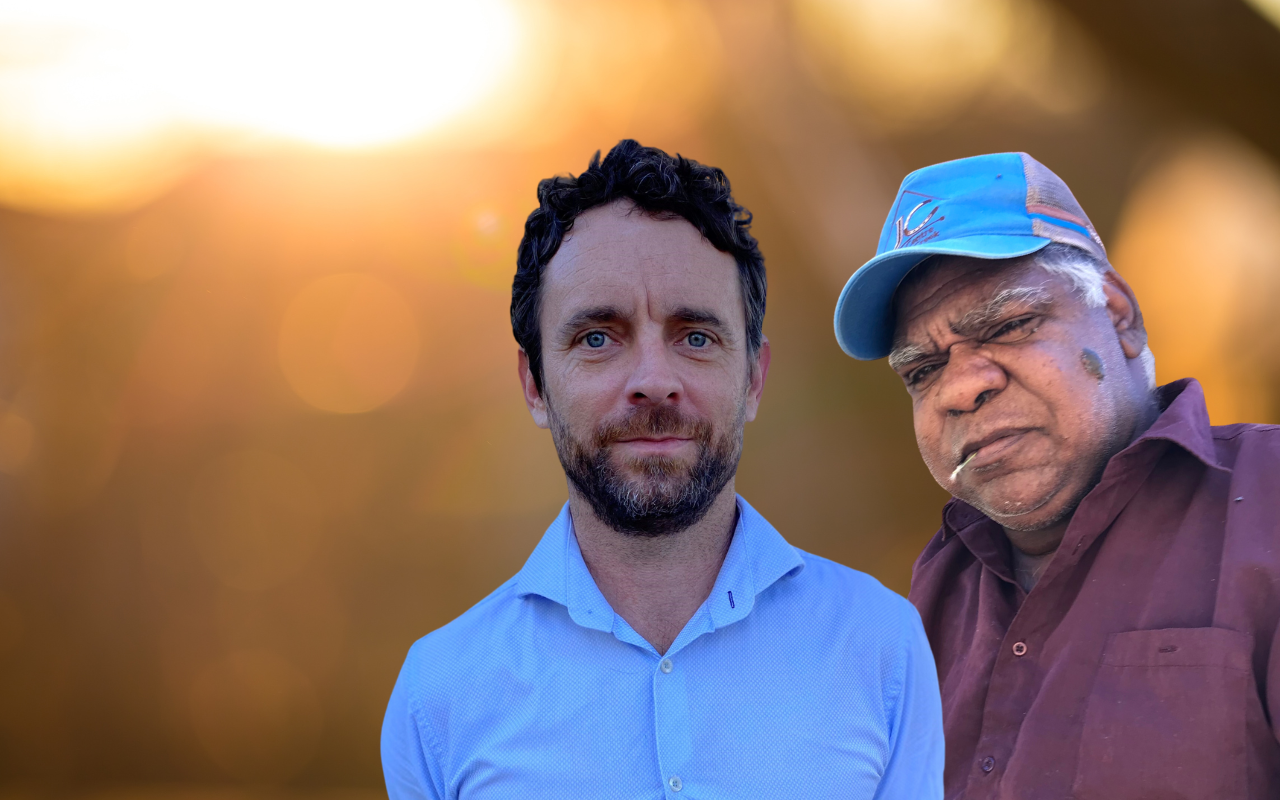We must change our culture and learn from First Nations people to combat climate change, writes Dr Simon Quilty, with commentary by Norman Frank Jupurrurla.
If a mouse is placed in a temperature-controlled box at 20°C and the temperature is increased by 0.1°C each day, there will come a point where the mouse will perish. Perhaps around 38°C. The very gradual increase in temperature will mean that the mouse’s physiological acclimatisation responses will be protective to some extent – if the mouse went from 20°C to maybe 37.5°C in a day, at a guess it wouldn’t survive because its physiology would not have had a chance to acclimatise.
When studying the impact of extreme heat on human wellbeing, particularly in light of climate change, things are not nearly so simple. Some people are rich and have ample resources to air condition their homes to keep them at a comfortable 21°C year-round, others are poor and are inadvertently forced to acclimatise because they have no choice. Some are old, frail and forgetful and do not have the physical abilities to move out of the heat or the cognitive capacity to recognise the danger, some are very young and are accidentally left in a parked car on a hot day. And some people, like First Nations people in northern Australia, have the strength of genetic advantage (here) and the power of deep culture that has been shaped by climate and environment over thousands of generations.
To ensure an Indigenous perspective is captured in this article, I invited co-author of our research Norman Frank Jupurrurla, Warumungu Elder from Tennant Creek, to share his thoughts and reflections on my words. His quotes feature throughout this article.

“We’ve been here for 40 000 years or more maybe, but we’re not like Papulinyi [non-Indigenous people]. Papulinyi, you’re getting smarter. Every day, doctors getting trickier, smarter. They got data, they got laptops, they got a computer. They live off things they can track. But not us, we got Mukkul. Mukkul means everything [all connections within the universe]. Mukkul comes from your kumpumpu [brains] and makes you Mukunjungku [a broad wisdom of the connectivity of all things]. For us, you’re nothing without Mukkul.”
Norman Frank Jupurrurla
Our article, recently published in the Lancet Planetary Health, examined all deaths in the Northern Territory over the past 40 years – a case time series of temperature at time of death. There are two factors that make this a unique population and these findings very interesting. Firstly, temperatures are very hot in the NT, and secondly, the population is extremely socio-culturally polarised, as described in our article. We matched every death over this period to the temperature on the day of death, and found that not only are Aboriginal people no more vulnerable to heat-related death (relative risk of death on a hot day 1.05, compared with non-Indigenous at relative risk of 1.18), but that the population as a whole is becoming more susceptible to heat over time (relative risk of death on a hot day in 1980–99 was 1.0 compared with 1.14 in 2000–2019).
“You’ve got Papulinyi [non-Indigenous person] over there sitting down in their house in the cool air condition, and you’ve got that poor Wumpurrarni [Aboriginal person] here living in the scrub, under an old shady tree or a bow shed.”
Norman Frank Jupurrurla
For Aboriginal people who have a rich culture shaped by the environment and ecosystem, they have lived through 40 years of a rolling extreme housing crisis, with limited access to air-conditioned spaces. This is both a celebration of cultural diversity and strengths of Aboriginal people, communities and culture, but, at the same time, a very sad indictment of the failures of successive governments to make any headway into either longevity or extreme poverty of Aboriginal Territorians. Non-Indigenous people have conversely benefited enormously from socio-economic prosperity and their access to an air-conditioned space has substantially increased, and yet these benefits appear to have had no impact on protecting against heat.

“Today, government put us in these houses that aren’t designed for our climate, on the outskirt of town. We can’t help ourselves from the heat, we’ve got no choice. All we can do is get inside the house as long as we got a fan going. Enough to keep us cool during the day. But at night, we all go outside, sleep outside, it’s more cooler, especially early hours in the morning it gets cool.”
Norman Frank Jupurrurla
Over our study period, the average age of death (excluding infant deaths) in the 1980s was 51.7 years for Aboriginal people and 51.8 years for non-Indigenous people. By the last decade of the study (2010–2019), the average age of an Aboriginal death was 53.2 years while non-Indigenous people were dying more than 15 years older than they were in 1980 at 66.9 years. This extreme difference is a surrogate marker for gains in wealth and subsequently health, and Aboriginal people made almost none. For instance, compared with 1980, non-Indigenous Territorians are now living in air-conditioned spaces for many more hours per day because they are wealthier. Aboriginal people are not.
“Papulinyi [non-Indigenous people] always be behind doors. They spoiled for them air conditioners, those Papulinyi, they can’t come out, and when they come out and feel that heat, bloody hell, it’s too hot for me [they say], I gotta go back inside. And Wumpurrarni, he just jump and go, as long as he’s got good shade, he’ll get out there and sit underneath the shade, he don’t care, as long as the breeze blowin … We don’t go out there and muck around in the hot or walk around or do things in the heat.”
Norman Frank Jupurrurla
To drive home the point, the Australian Bureau of Statistics rates every single suburb in Australia by its Index of Relative Socio-economic Disadvantage. For instance, in New South Wales there are 4112 suburbs, three of which are in the bottom 1% of poverty in the nation. In the NT, there are 255 suburbs of which 72 are in the bottom 1% and every single one of these suburbs is a remote community. Remote NT communities remain the poorest in Australia by a very long way. Whatever attempts and policies to change these circumstances have failed mainly because the solutions paradigms have predominantly been formed by non-Indigenous people, most of whom have not recognised the sovereign culture, strengths and values of First Nations people that are still held strong today.
“Now we lost in this world here today, in this environment where Papulinyi got us jammed and under their thumb.”
Norman Frank Jupurrurla
And so, the questions that have been raised from our hypothesis-generating research are, have ancient cultural practices protected Aboriginal people from extreme heat and countered the rolling housing crisis where people are forced to live in poorly designed, constructed and maintained overcrowded houses? And has the substantial socio-economic and infrastructural progress made by non-Indigenous communities in towns such as Darwin and Alice Springs actually increased people’s vulnerability to extreme heat?
Aboriginal people are no more vulnerable to heat; perhaps less so. Genetic variation provides some potential protection against high temperatures. Cultural practices are deeply nuanced when it comes to environment and climate. This extraordinarily rich knowledge and culture is unknown to most non-Indigenous Australians because Aboriginal people have no voice and are studied rather than listened to and heard. But it is real, practised and powerful.
“Going back to the 1980s, Wumpurrarni and Papulinyi people used to mix in the station, in the stockyards or wherever and work right through the summer. They were strong and they were clever, and they knew what they doing with the heat. They didn’t need technology like ‘aircon’ back then.”
Norman Frank Jupurrurla
In really hot places such as the NT, we are already coming perilously close to temperatures that are unsurvivable — the mouse in the hot box. The summers of 2019–20 in the NT blew records out of the room, and Aboriginal people who know the songlines that go back into ancient history are telling us that we are already in unprecedented times. It is likely that in the next decade there will come weather that kills those who cannot shelter. Urgent action is needed to prepare for this weather, particularly in remote NT, where housing standards are dire in just about every possible way despite recent NT Government action to ramp up construction of new dwellings. And here is the paradox: air conditioning, access to which is known to protect human health in heatwave events, may also be dampening our individual and societal capacity to handle the heat. Governments, policy makers and researchers need to recognise this paradox in policy and action immediately and delve more into the science that will help us understand it, and recognise the importance of building houses that are appropriate for the climate and environment. There is no time to waste.
“We need breezeways to catch the wind, our houses got to be designed for our climate. Houses that catch the wind from every direction … Use our Gwarda [global sensory awareness and intellect] to really think deep about how that house will work, a Mukunjungu Papulu [smart house] for hot weather, not just more ‘aircon’. Houses for our climate and for our culture.”
Norman Frank Jupurrurla
And perhaps even more importantly, our society needs to be listening to (not studying) Aboriginal people around what a culture that deeply recognises and embeds both environment and climate can look like. This will necessarily mean recognising weaknesses in our own consumptive, extractive and exploitative systems and actually changing the way that we understand what it is to be a human being on this planet that we all share.
“When you’re sitting there on nice and quiet day, when you hear your ears ring, that’s when your Manu, your country, he singing out for you. Manu is the most important thing, it gives you wealth and power, nothing’s more powerful than mother earth. He give us tucker, he give us country, he give us ceremony, he give us painting and that art and that Dreamtime story, that wealth, it comes back for our people. Mukkul, this means everything [all connections within the universe]. Its more important than money like Papulinyi want, he take a bit, he want more. He want more, he’s not satisfied. He got a lot now, but he still not satisfied. He still want more. But Wumpurrarni people, we satisfied. We kill one or two kangaroos. And then we see another one, we don’t want more. We say, nah, enough is enough for our family. We can just go past the rest of the roos. That’s it. With not greediness.”
Norman Frank Jupurrurla
As doctors, our profession has the responsibility to understand how heat will affect our communities, but our biomedical tools offer no solution to the rolling extreme heat that has already arrived. Perhaps our most important tool is our voice – loud and ferocious advocacy for urgent action to mitigate and adapt, action that needs to be much faster than our leaders and governments are willing to embrace, in a voice that does not drown out the voices of First Nations people who are the masters in knowledge of how to live harmoniously on the lands upon which we all now live.
Dr Simon Quilty is a specialist physician who has lived and worked in the remote Northern Territory for 18 years and is currently working with Wilya Janta and Warumungu Elders from Tennant Creek to build climate-resilient and culturally considered homes to allow families to thrive in a warming climate.
The statements or opinions expressed in this article reflect the views of the authors and do not necessarily represent the official policy of the AMA, the MJA or InSight+ unless so stated.
Subscribe to the free InSight+ weekly newsletter here. It is available to all readers, not just registered medical practitioners.
If you would like to submit an article for consideration, send a Word version to mjainsight-editor@ampco.com.au.

 more_vert
more_vert